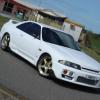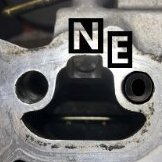Custom Glass Carbon Fibre R33 Projector Headlights Group Buy!
Announcements
-
Similar Content
-
Latest Posts
-
Are there any indicators that the vehicle is in limp mode? Any dash light, or something. Or is it just lack of acceleration?
-
Recaro sr3 I've always found comfy, compared to my stock r33 gtst and bride fixed back. Can get them cheapish from a Honda owner.
-
Does your rb gearbox have the common input shaft bearing sound? (One one where it goes away when u push the clutch in or get to higher revs) I heard if you put the wrong oil it can get this sound.
-
There's more than one way to skin that cat, and most of the sump Maatouks have done will be GTR sumps. They are HUGE in GTR drag racing here.
-
Yeah...I always start at the shift solenoids, because there's only a few reasons these will spook into limp mode, and bad shift solenoids is one ~ the other can be the shift control module (if you have steering wheel shift buttons)...it's easier to eliminate the solenoids first.
-







Recommended Posts